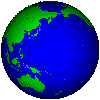


| Can the majority be wrong? | The history of science
according to Stephen
W. Hawking,
a respected contemporary theoretical physicist makes
it apparent that the accumulation of knowledge has been far from one
continuous and harmonious progression from "fact" to
"fact." Examples
abound of multiple credible
theories being formulated to explain the same set of observations. For
example, the current Standard Model of the Universe accepted by a
majority of scientists today including
Hawking,
postulates the likelihood of a "Big
Bang"
event. So it is reasonable to ask how
certain we can be that
everything actually started out that way. The answer turns out to be "not very." The ultimate foundation of our most cherished
scientific knowledge is based on an elaborate patchwork of theories...
theories which have many problems
and a few iconoclastic
critics. Chaos
cannot be ignored. In a book sure to disturb any physicist who cares to consider the epistemological aspects of his academic discipline, B. Alan Wallace convincingly demonstrates that everyone is Choosing Reality. Our theories are always best guesses as to what the scientific observations mean. Choosing an alternate theory which equally well explains the data, often implies a totally different kind of ultimate reality. As Wallace shows, not only has science been completely wrong in the past, but some of our most highly regarded contemporary theories undoubtedly must be wrong as well! |
|
Who
knows?
Who knows not?
|
In his small book, The Large, the Small, and the Human Mind, Roger Penrose dispels any doubt whatsoever that our most fundamental scientific beliefs sit on Jell-O-like ground. Even those of us who find it tough to follow his complex mathematical arguments, will quickly understand the difficulty all scientists and philosophers face as they attempt to harmonize observations of the very large (cosmos) and the very small (quantum phenomena) using the only cognitive tool available to us at the moment: the human mind. I should note at this point that many scientists believe we will design "super intelligence" machines which can out think human beings sometime within the next few decades (Ray Kurzweil). Who can say what such machines will allow their human masters to do. No doubt, Artificial Intelligence (AI) eventually will allow us to comprehend those mysteries which currently lay just outside our grasp (revealing new even greater mysteries, of course). |
|
Will
we ever learn the amazing
truth of everything?
|
Despite daunting difficulties, the most optimistic theoretical physicists today think we may be close to formulating a Theory of Everything, sometimes called String Theory or Super String Theory. It looks to me like they could be right, but the history of science suggests that every resolved mystery generates ten new mysteries. String Theory, which postulates dimensions well beyond the three or four of ordinary reality, if it manages to struggle through the gauntlet of peer scrutiny, could be a theory which finally exceeds the human mind's capability of comprehension. Few people claim the ability to think in even five dimensional space and the latest theories postulate ten or twenty-six dimensions. Interestingly, common honey bees seem to think in six dimensions so they might be better equipped to comprehend the esoterics of String Theory than mere humans in the present evolutionary milieu! (The honeybee is getting special attention from geneticists these days, by the way!) |
|
Physicists:
the mystics of our age? |
By
now every school child knows how odd are the implications of Einstein's
Theories of Relativity: nothing can exceed the speed of light; things get
heavier as they travel faster while time slows down; large masses act as
if they "warp" space-time creating gravity wells, etc. Some of the consequences
of quantum
mechanics are very strange
as well (Ref1). In one
experiment, a subatomic neutral pion is split into two photons, which speed off in
opposite directions and with opposite spin orientations. Then, one of the
two photons is altered by the experimenter and a complimentary change is
detected in the other one even though there appears to be no classical
connection between the two photons now separated by great distances. The
two "pieces" which have split off from the original pion remain a part
of the same wave function which defines the original particle, in something
called quantum entanglement, even though each "piece" can be detected separately
miles, or even galaxies apart. A 1998 experiment at Cal tech demonstrated that the
phenomenon
can be used for instantaneous communication of information. The implications of
quantum entanglement are mind boggling |
| In other experiments, researchers have detected virtual particle pair (e.g. electron positron) creation and annihilation processes. In other words, something suddenly appears for a moment out of nothing and then again disappears. Quantum physicists deduce the "nothing" actually is something as yet unknown and call the observed phenomenon zero-point-fluctuation. | |
| No
one knows WHY reality has these seemingly bizarre characteristics, but
there is no longer much doubt about the experimental evidence itself. It
is our finite human perspective that makes it all so mysterious. Common
sense is of little help when it comes to understanding phenomena found
outside the common human scales of length and time. At the boundary conditions,
it fails us completely. The tiny postulated space-time "string" of string
theory is beyond the current and foreseeable capabilities of science to
observe directly and our guesses about the place of our universe in a bigger
picture are largely fantasy. While theoretical physicists are an optimistic
and persistent lot, it is possible that they finally may be bumping up
against the theoretical limits of human science. Everything gets very strange
and mysterious when approaching infinitely large or infinitely small boundaries,
boundaries which may forever exclude human observers. The other side of
infinity may be wonderful, but we may never know, even though it does appear
we may be due for another major scientific paradigm
shift |
|
|
Honeybees:
closer to God than man?
|
Though we continue to learn more and more about our universe and the life it contains, we will never understand the core truths of existence, a mystical position long ago established in pre scientific religious teachings. The Scientific Method has served us well in our quest to make sense out of human observations. Yet, it always will be completely inadequate for learning the ultimate nature of reality. It is inadequate for one simple reason: the specific sensory organs and neural apparatus we happened to have inherited are but one set from an infinite number of evolutionary possibilities, as Stephen Jay Gould's or Richard Dawkins' elaborate research convincingly demonstrates. Our science, our philosophy, our religions all reflect the kind of cognitive apparatus we chanced to have acquired from our early ancestors. Were it possible to restart the evolutionary process over again, an entirely different array of life forms with startlingly different capabilities certainly would emerge. Consciousness might or might not be the dominant characteristic of the highest order species. Whatever life expression happened to make it to the apex this time around might well be more bee like than human like! |
|
A
Thought Experiment
|
To
show you what I mean, let's suppose for a moment that evolution were to
have produced the common honeybee as it's highest expression. What sort
of reality would the Apis Mellifera scientists, mystics and philosophers
deduce from their observations and reasoning? First, let's examine the sort of
observations they might be capable of making.
A quick review of the bee's anatomy reveals its only manipulation appendage to be a set of mandibles which it uses for crude grasping or cutting jobs within the hive or for defense against invaders. It has nothing resembling a grasping hand with an opposable thumb, so complex tool making as we know it would be improbable. Even after many more generations of evolutionary refinement, a bee might still have to do its science without the help of instruments and equipment like telescopes, computers, interferometers, magnetometers, clocks, etc., etc. We know their sight works in the lower visible to ultraviolet spectrum and that it is sensitive to polarized light . We also know that a bee must be rather close to anything in its visual field to make decisions based on what it sees. So, visually investigating anything very large, like an ocean for example, would be difficult, if not impossible. We also think bees may have a magnetic field sensing organ as well as tactile, olfactory and auditory senses. We know that the bee has a very small brain, but one which has acquired extraordinary cognitive capabilities different from those of humans. With such equipment, they might never discover the existence of stars, nor detect a red shift in intergalactic hydrogen spectra. They might never discover the sub microscopic molecular world or subatomic particles or photons. They might however, "see" things in other dimensions of Ultimate Reality totally unknown to those of us stuck with the four dimensions of Ordinary Reality. With an evolutionary trajectory so dramatically different than that of humans, they might never feel or express religious impulses, love, or wonder at the "meaning of life." In short, even if moved to ponder the ultimate nature of reality, the Apis Mellifera version would bear no resemblance to the various versions espoused by their human counterparts. Still, in a highly developed intellectual spiritual community of bees, there might well be those who conclude that their understanding of the universe is the one and only correct view, unaware that other species had acquired evidence supporting other inconceivable visions. Beliefs are not facts and even our "facts" cannot be known with absolute certainty, given the finite and temporal nature of our perceptions of what appears to be an infinite reality. |
| "Question Authority!" -Anon |
With
all our collective understanding of quarks, supernova, superstrings, gravity,
logic, mathematics, neurophysiology and pollywogs; it would appear that our specie has discovered but a tiny fraction of everything that could
be known by a truly omniscient being. Indeed, the history of human science
(as well as Apis Mellifera "science") makes such a conclusion all but inevitable. What
I have called Extraordinary Reality is the reality of human science. Beyond is
Ultimate Reality, confounding the extraordinary mysteries which challenge
science and mystical religion alike.
|


